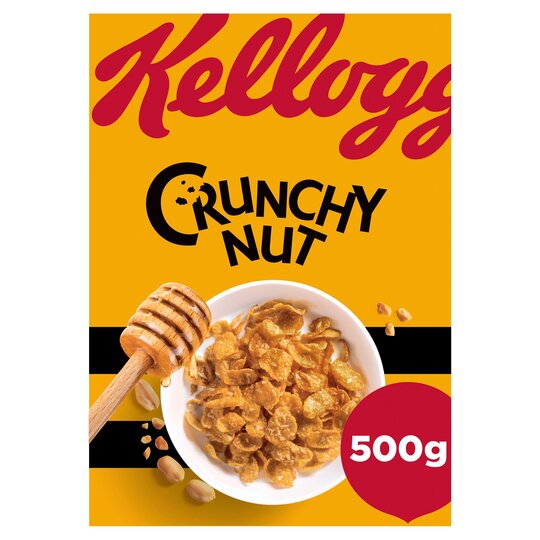Shocking grocery price hikes of more than 20 per cent on hundreds of popular items are putting increasing pressure on household budgets, while Which? research suggests a decline in availability of supermarket discounts and budget ranges compared with two years ago as the cost of living crisis continues to bite.
Which analysed the prices of more than 21,000 groceries across two years – comparing their average prices at eight major supermarkets between the start of December 2021 and the end of February 2022 with the same period two years previously – to find out how inflation has been affecting people’s weekly food shop.
They found that the price of 265 groceries shot up by more than a fifth over the last two years.
This list of items included Kellogg’s Crunchy Nut Corn Flakes Cereal 500g which increased by 21.4 per cent in price at Tesco, Asda’s Own Label Closed Cup Mushrooms 250g up 21.4 per cent and Cathedral City Extra Mature Cheddar 350g which rose by 21.1 per cent at Ocado.
Across the 20 categories of groceries Which? looked at, fizzy drinks had the biggest average price rises, at 5.9%. This was followed by butters and spreads (4.9%), energy drinks (4.8%) and milk (4.6%).
Groceries with the lowest inflation included chocolate (1.4%), fresh fruit (1.6%), biscuits (1.8%) and vegetables (1.9%).
Which? has also found that there are areas where supermarkets can do more to support consumers dealing with these unprecedented price hikes. Over the past two years, there have been fewer discounts, smaller products at the same price and limited availability of own-label budget ranges at different supermarkets.
The number of promotions has reduced across every one of the 20 categories of popular-selling groceries the consumer champion looked at – the number of discounts on bottled water was down 14.7 per cent, vegetables down 11 per cent and energy drinks down 10.8 per cent.
The size of the savings offered in promotions that did still happen had also been cut in three quarters of the categories. This was most pronounced for butters and spreads where the size of savings were reduced by 3.6 per cent across the two-year period, followed by vegetables (3.5%) and crisps (2.9%).
Another way manufacturers have tried to disguise rising prices is by ‘shrinkflation’ – reducing the size of packaging without cutting the price. For example, the contents of Nescafé Azera Americano decaff instant coffee shrank from 100g to 90g in Tesco in February this year but its price remained at £5.49. That is an effective price increase to shoppers of 11 per cent per 100g.
Similarly, Walkers Classic Variety Crisps went from 24 bags in a multipack to 22 bags at Tesco, Asda and Morrisons last autumn, but stayed the same price.
Which?’s investigation also found that own-brand budget ranges have become less available over the past two years. Own-label budget ranges had the lowest level of inflation, at just 0.2%. Standard ranges rose in price by 2.8 per cent and the highest inflation was seen in own-label premium ranges which saw 3.2 per cent inflation over two years.
Which looked at how often budget own-brand items were out of stock and found they were unavailable on three times as many days during the most recent three-month period, compared to two years previously.
Own-brand cheese was out of stock the most of all the 20 products categories Which? looked at. It was out of stock 6 days in 2019 compared to 17 days in 2022.
With the cost of living crisis continuing to worsen and inflation rising, food prices will only continue to soar in 2022. While many supermarkets have taken steps to mitigate inflation for their customers – such as locking in the prices of certain products – there is still more that could be done in certain areas to support consumers dealing with these unprecedented price hikes.
Which? believes it should be as easy as possible for consumers to choose the best value product for them without worrying about inadvertently buying smaller products or their local store not stocking budget ranges.
Currently, retailers’ approaches to unit pricing can be inconsistent and confusing for customers trying to compare products.
Supermarkets and manufacturers must be more upfront about the costs of their products and provide clear unit pricing so consumers can easily compare and choose the best value items. For example, by providing a clear and legible unit price – such as cost per 100g or 100ml – allows people to compare the value for money of different pack sizes, ranges or brands.
With more people opting for budget ranges during the cost of living crisis, supermarkets should ensure that budget items are readily available across their stores so consumers are not forced to pay over the odds for everyday items.
Sue Davies, Which? Head of Food Policy and Consumer Rights, said:
“Our research reveals that eye-watering price rises are being exacerbated by practices like shrinkflation and limited availability of all-important budget ranges – and these factors are combining to put huge pressure on household shopping budgets.
“During an unrelenting cost of living crisis, consumers should be able to easily choose the best value product for them without worrying about shrinkflation or whether their local store stocks budget ranges.
“Which? is calling for supermarkets and manufacturers to be more up-front about costs and provide really clear unit pricing so people can easily compare items. Budget ranges should also be more widely available at all stores so consumers do not have to pay over the odds for everyday essentials.”







